Menu
- Home
- Internal & External Doors, Frames & Skirtings
- Ironmongery and Fittings By Brand
- Door Furniture By Category
- Hinges, Sliding Gear, Door Closers & Controls
- Locks & Security Devices for Doors, Gates & Cubicles
- Panic, Fire, Smoke, Weather & Ventilators
- Cabinet Fittings, Wardrobe Rails & Shelving
- Window Fittings, Draught Proofing & Security
- Bathroom, Electrical, Curtain & Household
- Fixings, Tools & Consumables
- Quick Order Form
- Contact Us
- Terms & Conds
- Login
- Recent Orders
- Home
- Phone: 0131 444 1149
- Quick Order Form
- Contact Us
- Terms & Conds
- Login
- Recent Orders
The information below will help you to select the right lock or latch for the job. Should you have any further queries, please call us on 0131 444 1149.
There are two sections below: Terminology (containing an A-Z of common terms and descriptions) and Variations (which provides descriptions of some related terms that you might find in our product pages) along with information about Master Keying of cylinders.
ACTION The Action of a catch, latch or lock describes the inward movement of a spring loaded bolt when it is pushed in or withdrawn by a handle and the automatic springing outward when it is released.
BACKSET The backset is the horizontal distance from the faceplate of the latch or lock to the centre of the follower (the square hole for the handle). The same for the centre of the keyhole in the case of a lever mechanism lock, or the centre of the cylinder in a cylinder type lock.
DEADLOCK A deadlock is a lock with just a square bolt, which is locked and unlocked by a key only.
DEADLOCKING This term means an operation by the key, usually an extra turn to prevent the pushing in of the spring bolt of a night latch and its withdrawal by a handle. Automatic deadlocking is available on some mortice and rim nightlatches and this is achieved by a trigger being depressed activating a device in the latch, which stops the bolt being depressed by end pressure when the door is closed.
FLUSH SPRING CATCH A flush spring catch is set in flush with the surface of the hatch or door. It has a spring loaded bevelled bolt, which is operated by a ring pull recessed into the body of the catch.
FOLLOWER The square hole in a latch or two-bolt lock, which takes the spindle of a door handle.
HOLD BACK A manually operated device, which can be used to hold the spring bolt back inside the lock when it is more convenient not to have to use a key or a handle to open the door. The bolt is pushed inside the latch and a slide operated to keep it there. On a mortice nightlatch the slide is located on the faceplate and on the rim nightlatch, on the backcase.
HORIZONTAL LATCH OR LOCK This type of latch or lock is usually used with knob furniture. Knob furniture does not look good if it is too close to the edge of the door. As well as that, care must be taken to position knob handles a sufficient distance from the door stop, to prevent the hand being injured when you draw the door closed. Using a horizontal latch or lock takes care of both of these problems. The keyhole or cylinder hole of a lock is nearest the door stop, with the follower for the knob handle furthest away. Latches are available in 100, 125 & 150mm overall lengths. Horizontal locks come in 125 & 150mm sizes. If you need to use a lock, but the backsets mentioned above are further away than you would like, you could consider using a 100mm upright mortice lock. As mentioned previously, however, always check the position of the hand on the knob has sufficient clearance from the stop to prevent injury.
MECHANISM The Mechanism describes the internal parts of a lock, which come into operation when the key is turned to throw or withdraw the deadbolt.
SILENT ACTION LATCH / ANTIFRICTION DEVICE The silent action latch has a bevelled spring bolt which has the appearance of being in three parts. This is because the middle section of the metal bolt has been removed and replaced by a lightly sprung plastic or nylon tongue. When the door is closed the tongue makes contact with the striking plate first and the action of it being pushed back and down takes the metal bolt with it, reducing contact with the striking plate until it springs into the hole and secures the door. This soft assisted action is very quiet.
• Spindle A piece of square steel bar of varying length depending on door thickness and most commonly 8mm thick, driven by the knob or lever to operate a latch bolt. This is normally supplied with the door furniture and variations including:
-- Plain Spindle, which could be termed floating, as it is not mechanically fixed to the handle on either side of the door. This is not a suitable spindle to use with a door closer because it leaves all the strain on the furniture fixing screws. Used with any type of lever furniture which has a retained backplate, or knob furniture with retained revolving roses (called Pitts Rose).
-- Grub Screw Fixing, the wall of the handle neck is drilled and tapped and as it is driven in, the 'V' point of the grub screw locates in a groove in the spindle. Some spindles have split ends, which expand with the force of the grub screw making it secure and suitable for use with a door closer. Grub Screw with a projecting point, similar to the aforementioned except that the spindle has one thin wall which is located opposite the grub screw entry point and as the grub screw is driven home, the point pierces the spindle making it very secure. Recommended for use on doors fitted with a door closer.
-- Duces Spindle, a 19th Century invention (by Joseph Duce), but still in limited use. Used with knob furniture, it comprises of a spindle which has one half threaded with grooves running along the four sides of the threaded part and the other half of the spindle is plain with a small hole through it. The plain end of the spindle is pinned to one of the knobs and pushed through the latch or lock follower and the other knob, which is threaded internally and has a loose rose (called a Maces rose), is screwed down the spindle until it nearly touches the door. A grub screw is then screwed through the neck of the knob and tightened until it fits into one of the grooves. The loose rose is slid down over the neck of the knob covering the grub screw and preventing it from loosening.
-- Microtite Spindle, a very secure spindle for use with knob furniture. Half of the spindle is plain and is pinned to the neck of one knob, this is called the Rim Knob, a loose rose slides down the neck and covers the pin and is screwed to the door when the furniture is being fitted. The other half of the spindle is threaded and has a round tapped collar, which runs along the spindle tightening the unit on to the door. The collar has a 'v' groove all the way round and the other knob called the Micro Knob is recessed to accommodate the collar. A grub screw is then threaded through the neck of the knob and when this is tightened on to the groove in the collar it secures the furniture to the door. Again a loose rose is slid down the neck of the knob covering the grub screw, preventing it from coming loose. The benefits of this type of spindle are that it is: Infinitely adjustable for doors between 35mm and 65mm thick. All the pulling force is transferred through the spindle. No visible grubscrews and ideal for hollow core doors or for doors fitted with a door closer.
-- Taylors spindle, a short piece of plain spindle fixed to a small round back plate, which usually has two screw fixing holes. It is used to make a moving handle into a dead handle. Not a very successful piece of equipment as the tendency is for people to try to turn a handle. Turning weakens the screw fixings and the spindle eventually works free. It should only be used when fitting oval knobs (which have an irregular shape and look better when they are in a vertical or horizontal position). Sprung lever handles (which always return to their normal position) or round shape knobs (which look the same no matter if they are turned) are better left in the moving state.
-- Swivel spindle, Split spindle, some special purpose mortice locks have split followers and a spindle, which has one side able to turn while the other side is held by a stop in the lock, a swivel or split spindle needs to be used with these locks. The swivel spindle has two parts, which are permanently held together, but can revolve independently of one another. This needs a lock with a clear follower so that the spindle can pass through. To operate properly the swivel spindle has to be retained in the exact middle of the follower, which can be tricky. Some are supplied with both sides of the spindle threaded and grooved just like a Duces spindle to take a grub screw fixing.
UPRIGHT LATCH OR LOCK Unlike the horizontal lock, on the upright lock the handle follower and the keyhole or cylinder hole are positioned one above the other and, therefore, have the same backset. Upright latches are usually only used to keep the case size the same as the lock. It is easier on site to have doors with the same size of mortice for all locations. This applies to locks for bathroom & W.C. doors.
Terminology
ACTION The Action of a catch, latch or lock describes the inward movement of a spring loaded bolt when it is pushed in or withdrawn by a handle and the automatic springing outward when it is released.
BACKSET The backset is the horizontal distance from the faceplate of the latch or lock to the centre of the follower (the square hole for the handle). The same for the centre of the keyhole in the case of a lever mechanism lock, or the centre of the cylinder in a cylinder type lock.
DEADLOCK A deadlock is a lock with just a square bolt, which is locked and unlocked by a key only.
DEADLOCKING This term means an operation by the key, usually an extra turn to prevent the pushing in of the spring bolt of a night latch and its withdrawal by a handle. Automatic deadlocking is available on some mortice and rim nightlatches and this is achieved by a trigger being depressed activating a device in the latch, which stops the bolt being depressed by end pressure when the door is closed.
FLUSH SPRING CATCH A flush spring catch is set in flush with the surface of the hatch or door. It has a spring loaded bevelled bolt, which is operated by a ring pull recessed into the body of the catch.
FOLLOWER The square hole in a latch or two-bolt lock, which takes the spindle of a door handle.
HOLD BACK A manually operated device, which can be used to hold the spring bolt back inside the lock when it is more convenient not to have to use a key or a handle to open the door. The bolt is pushed inside the latch and a slide operated to keep it there. On a mortice nightlatch the slide is located on the faceplate and on the rim nightlatch, on the backcase.
HORIZONTAL LATCH OR LOCK This type of latch or lock is usually used with knob furniture. Knob furniture does not look good if it is too close to the edge of the door. As well as that, care must be taken to position knob handles a sufficient distance from the door stop, to prevent the hand being injured when you draw the door closed. Using a horizontal latch or lock takes care of both of these problems. The keyhole or cylinder hole of a lock is nearest the door stop, with the follower for the knob handle furthest away. Latches are available in 100, 125 & 150mm overall lengths. Horizontal locks come in 125 & 150mm sizes. If you need to use a lock, but the backsets mentioned above are further away than you would like, you could consider using a 100mm upright mortice lock. As mentioned previously, however, always check the position of the hand on the knob has sufficient clearance from the stop to prevent injury.
MECHANISM The Mechanism describes the internal parts of a lock, which come into operation when the key is turned to throw or withdraw the deadbolt.
SILENT ACTION LATCH / ANTIFRICTION DEVICE The silent action latch has a bevelled spring bolt which has the appearance of being in three parts. This is because the middle section of the metal bolt has been removed and replaced by a lightly sprung plastic or nylon tongue. When the door is closed the tongue makes contact with the striking plate first and the action of it being pushed back and down takes the metal bolt with it, reducing contact with the striking plate until it springs into the hole and secures the door. This soft assisted action is very quiet.
• Spindle A piece of square steel bar of varying length depending on door thickness and most commonly 8mm thick, driven by the knob or lever to operate a latch bolt. This is normally supplied with the door furniture and variations including:
-- Plain Spindle, which could be termed floating, as it is not mechanically fixed to the handle on either side of the door. This is not a suitable spindle to use with a door closer because it leaves all the strain on the furniture fixing screws. Used with any type of lever furniture which has a retained backplate, or knob furniture with retained revolving roses (called Pitts Rose).
-- Grub Screw Fixing, the wall of the handle neck is drilled and tapped and as it is driven in, the 'V' point of the grub screw locates in a groove in the spindle. Some spindles have split ends, which expand with the force of the grub screw making it secure and suitable for use with a door closer. Grub Screw with a projecting point, similar to the aforementioned except that the spindle has one thin wall which is located opposite the grub screw entry point and as the grub screw is driven home, the point pierces the spindle making it very secure. Recommended for use on doors fitted with a door closer.
-- Duces Spindle, a 19th Century invention (by Joseph Duce), but still in limited use. Used with knob furniture, it comprises of a spindle which has one half threaded with grooves running along the four sides of the threaded part and the other half of the spindle is plain with a small hole through it. The plain end of the spindle is pinned to one of the knobs and pushed through the latch or lock follower and the other knob, which is threaded internally and has a loose rose (called a Maces rose), is screwed down the spindle until it nearly touches the door. A grub screw is then screwed through the neck of the knob and tightened until it fits into one of the grooves. The loose rose is slid down over the neck of the knob covering the grub screw and preventing it from loosening.
-- Microtite Spindle, a very secure spindle for use with knob furniture. Half of the spindle is plain and is pinned to the neck of one knob, this is called the Rim Knob, a loose rose slides down the neck and covers the pin and is screwed to the door when the furniture is being fitted. The other half of the spindle is threaded and has a round tapped collar, which runs along the spindle tightening the unit on to the door. The collar has a 'v' groove all the way round and the other knob called the Micro Knob is recessed to accommodate the collar. A grub screw is then threaded through the neck of the knob and when this is tightened on to the groove in the collar it secures the furniture to the door. Again a loose rose is slid down the neck of the knob covering the grub screw, preventing it from coming loose. The benefits of this type of spindle are that it is: Infinitely adjustable for doors between 35mm and 65mm thick. All the pulling force is transferred through the spindle. No visible grubscrews and ideal for hollow core doors or for doors fitted with a door closer.
-- Taylors spindle, a short piece of plain spindle fixed to a small round back plate, which usually has two screw fixing holes. It is used to make a moving handle into a dead handle. Not a very successful piece of equipment as the tendency is for people to try to turn a handle. Turning weakens the screw fixings and the spindle eventually works free. It should only be used when fitting oval knobs (which have an irregular shape and look better when they are in a vertical or horizontal position). Sprung lever handles (which always return to their normal position) or round shape knobs (which look the same no matter if they are turned) are better left in the moving state.
-- Swivel spindle, Split spindle, some special purpose mortice locks have split followers and a spindle, which has one side able to turn while the other side is held by a stop in the lock, a swivel or split spindle needs to be used with these locks. The swivel spindle has two parts, which are permanently held together, but can revolve independently of one another. This needs a lock with a clear follower so that the spindle can pass through. To operate properly the swivel spindle has to be retained in the exact middle of the follower, which can be tricky. Some are supplied with both sides of the spindle threaded and grooved just like a Duces spindle to take a grub screw fixing.
UPRIGHT LATCH OR LOCK Unlike the horizontal lock, on the upright lock the handle follower and the keyhole or cylinder hole are positioned one above the other and, therefore, have the same backset. Upright latches are usually only used to keep the case size the same as the lock. It is easier on site to have doors with the same size of mortice for all locations. This applies to locks for bathroom & W.C. doors.
All Good, But Which One Do I Need?
The simplest method of retaining a door in the closed position is by fitting a Catch. Catches, therefore, are used mainly on doors, which require no great degree of security and provide ease of use; a pulling action is all that is needed to open a door. The next step up is to fit a Latch. Latch is the name used for a fastening which has a bolt (bevelled or roller), which is usually spring loaded and is operated by a handle or lifted by a thumb lever, but not a key. It gives no greater degree of security as far as protection of the contents of a room is concerned, but is a more positive way of just keeping a door closed. The only departure from this rule is when the term latch is applied to a night latch, which has a spring bolt operated by a key outside and a turn inside. The spring bolt can be bevelled or roller. Night latches come in rim or mortice applications. When protection of the contents of a room is required then we move on to a Lock and depending on the security requirements and probably aesthetics we choose from the many different types of lock available.
Some variations
AUTOMATIC LOCK The term applies to several different kinds of lock i.e. Coin operated locks fitted to lockers or toilet doors (can be coin return or coin retain). Night latches which need a key to re-open after closing. Hotel bedroom locks which need a key or card to re-open after closing. Locks which have a device, for automatically triggering the throw of the deadbolt, or dead-locking the latch bolt, when the door is closed.
BUDGET LOCK Available in rim or mortice versions they have a tongue, which fits into a slot in the keeper or passes over and tightens against a plate when turned to 90 degrees. The lock is operated by a 'T' shape key, which has a square drive.
CABINET LOCK A term for the various kinds of locks fitted to furniture, cupboards, boxes, chests and drawers.
CAM LOCK A lock with a thrower, usually made from flat steel which is attached to the plug end of a small cylinder. Locks like these are usually used to secure drawers in cabinets or for locker doors.
CYLINDER RIM DEADLOCK Simple version can be locked or unlocked by the key from the outside and the knob inside. A more refined version has the deadbolt locking automatically when the door is closed and withdrawn by the handle inside and the key outside. The handle can be deadlocked by a reverse turn of the key from the outside. The bolt can be held back by turning the handle and depressing the button on the case.
CYLINDER RIM NIGHT LATCH Basic version has a latchbolt, which is withdrawn by the key from the outside and the knob from the inside. The latchbolt can be deadlocked or held back by the slide button on the case. It can also be reversed to suit outward opening doors, in which case, a striking plate is required instead of the box staple.
CLAW BOLT, CLUTCH BOLT & HOOK BOLT LOCKS Made mainly for sliding doors. The claw bolt of a sliding door deadlock has horizontally pivoted claws, which swing out sideways when the door is locked, wrapping themselves around the keeper plate. This lock can also be used on hinged doors to prevent the door being prised away from the frame. Other small versions of the claw bolt lock system are available for tills, drawers or thin sliding doors. The clutch bolt lock has a sprung 'L' shaped bolt, which on some locks projects from the case and rides up and over the keeper to secure the door. On other models the spring bolt remains inside the lock, and as the door is closed the keeper (which has a projection with a notch) goes inside the lock and depresses the spring bolt until the hook and the notch fit together. The lock is opened by a key or in the case of a toilet lock, by a flat lever, fitted into a pressed recess in a back-plate. The backplates can be mounted on one or both sides of the door. In the hook bolt lock when the bolt is thrown it moves downward in a curve over the keeper plate and for added security it is possible to get this type of lock with two bolts: one going up and the other down. For sliding cupboard doors, mortice or cut cupboard locks are available with hook to the side or in the case of sliding doors which pass and overlap in the middle, you can get a cut cupboard lock with a hook bolt coming out of the back of the lock fitted to the front door and locating into a flat plate keeper on the face of the rear door.
CLOSE SHACKLE PADLOCK A padlock which has the minimum amount of the shackle visible, when closed. Used to give added protection against forcing or cutting due to the small amount of exposed shackle. Be careful to choose one that will have enough clearance when the shackle is closed to take the object it is fitting around.
CYLINDER MORTICE LOCK CASE A lock with the case pierced to take a cylinder. The piercing varies depending on the type of cylinder being used. It can be oval to suit the UK size of oval cylinder, oval to suit the Scandinavian size of oval cylinder, keyhole shaped to suit the Euro Profile cylinder or it can be round with the hole threaded to suit round threaded cylinders.
CYLINDERS In lock terminology the word cylinder usually applies to a body which contains a pin tumbler or disc tumbler mechanism. Patterns include:
-- Round rim cylinders, which have a long connecting bar to go through the door, reach inside and operate the rim cylinder night latch or deadlock case on the inside face of the door.
-- Round threaded cylinders, which screw into a mortice nightlatch, deadlock or sashlock case having corresponding threaded holes to receive this type of cylinder. The cylinders have a groove along the side to receive a retaining bar, which prevents the cylinder from rotating during operation.
-- Oval cylinders are available to suit UK manufactured lock cases and Continental (Scandinavian) lock cases. The UK oval cylinder is smaller on the face than the Scandinavian cylinder. They are not interchangeable so appropriate lock cases must be specified. Available as single cylinder, double cylinder and cylinder & turn. Lengths to suit door thicknesses and thickness of door furniture, but fewer lengths and offsets are available in the oval cylinder than offered in the Euro Profile range.
-- Euro Profile cylinders (large keyhole shape) are now the most widely used mortice lock cylinder in the UK, overtaking the sales of the small UK oval cylinder many years ago. They offer a much larger range of sizes and are available as single cylinder, double cylinder and cylinder & thumb turn. The door thickness, position of lock in the door and thickness of door furniture determine the length and offset of cylinder required.
Master keying of cylinders
Contrary to what some people think, master keying does not increase security and in fact can have the opposite effect. Any lock that has more than one key that can operate it has a reduction in security. The more complex a master keyed system is, the less secure it can become. On the plus side, however, on buildings which have many locked doors, the convenience given by a well-worked out master key system usually offsets the loss in security.
MASTER KEY In its simplest form a master keyed suite can have as many different locks as needed all with its own individual key, and all operated by a single master key. Although simple in structure, this type of suite is the least compromised as far as security is concerned.
SERVANT KEYS This key will open only the lock, or group of locks, which have the same differ, called 'locks to pass'. It is possible, however, to have a lock on a door which for convenience reasons, can be opened by all the different servant keys. This might be a lock on the entrance door to a block of flats. The term used to describe this lock function would be 'common keyed'.
SUB MASTER KEY Given to departmental managers, the sub master key will operate all the locks within that department, but no others. Each department will have locks to differ from other departments and under a different sub master key making it easier to pinpoint responsibility in the event of theft or other problems. Another example of sub master key allocation might be in a hotel where each floor could be under the control of a maid. Today, card systems rather than key systems are more likely to be used in hotels.
GRAND MASTER KEY Held by the person with overall responsibility for the building, this key level has access to all the locks within the building. Some individual locks to special areas can be under the grand master key only, keeping those areas as secure as possible.
GREAT GRAND MASTER KEY An example of when a great grand master key system might be used could be in a situation where there is a complex of large buildings with each building being under the control of a different manager. Each manager would have a grand master key, which would only operate the locks in their building. In overall charge of all of the buildings could be a general manager or owner who has access to all buildings and all of the locks within all of the buildings - they could have a great grand master key. This type of arrangement is very unusual.
MASTER KEY In its simplest form a master keyed suite can have as many different locks as needed all with its own individual key, and all operated by a single master key. Although simple in structure, this type of suite is the least compromised as far as security is concerned.
SERVANT KEYS This key will open only the lock, or group of locks, which have the same differ, called 'locks to pass'. It is possible, however, to have a lock on a door which for convenience reasons, can be opened by all the different servant keys. This might be a lock on the entrance door to a block of flats. The term used to describe this lock function would be 'common keyed'.
SUB MASTER KEY Given to departmental managers, the sub master key will operate all the locks within that department, but no others. Each department will have locks to differ from other departments and under a different sub master key making it easier to pinpoint responsibility in the event of theft or other problems. Another example of sub master key allocation might be in a hotel where each floor could be under the control of a maid. Today, card systems rather than key systems are more likely to be used in hotels.
GRAND MASTER KEY Held by the person with overall responsibility for the building, this key level has access to all the locks within the building. Some individual locks to special areas can be under the grand master key only, keeping those areas as secure as possible.
GREAT GRAND MASTER KEY An example of when a great grand master key system might be used could be in a situation where there is a complex of large buildings with each building being under the control of a different manager. Each manager would have a grand master key, which would only operate the locks in their building. In overall charge of all of the buildings could be a general manager or owner who has access to all buildings and all of the locks within all of the buildings - they could have a great grand master key. This type of arrangement is very unusual.

 Internal Doors
Internal Doors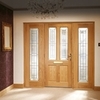 External Doors
External Doors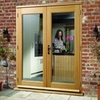 Patio & French Doors
Patio & French Doors Frames, Skirtings & Accessories
Frames, Skirtings & Accessories Format
Format Alexander & Wilks
Alexander & Wilks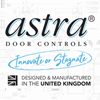 Astra Door Controls
Astra Door Controls Atlantic Hardware
Atlantic Hardware Assa Abloy
Assa Abloy Burlington
Burlington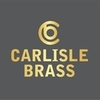 Carlisle Brass
Carlisle Brass Delamain
Delamain Eurospec
Eurospec Fingertip Design
Fingertip Design Forme
Forme Fortessa
Fortessa From The Anvil
From The Anvil From The Anvil Home & Garden
From The Anvil Home & Garden From The Anvil Lighting
From The Anvil Lighting Fulton & Bray
Fulton & Bray Hafele
Hafele Heritage Brass
Heritage Brass Jedo
Jedo Mediterranean
Mediterranean Old English
Old English Rosso Tecnica
Rosso Tecnica Senza Pari
Senza Pari Serozzetta
Serozzetta Sorrento
Sorrento Status
Status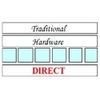 Traditional Hardware Direct
Traditional Hardware Direct Zoo Hardware
Zoo Hardware Lever Handles On Roses
Lever Handles On Roses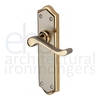 Lever Handles On Backplates
Lever Handles On Backplates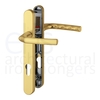 Multi-Point Lock Furniture
Multi-Point Lock Furniture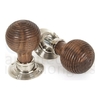 Knob Handles On Roses
Knob Handles On Roses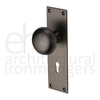 Knob Handles On Backplates
Knob Handles On Backplates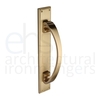 Pull Handles
Pull Handles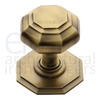 Centre Door Knobs
Centre Door Knobs Edinburgh Pattern Handles
Edinburgh Pattern Handles Bathroom Turns
Bathroom Turns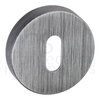 Escutcheons
Escutcheons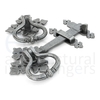 Traditional Latch Sets
Traditional Latch Sets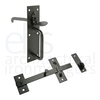 Gate Handles & Catches
Gate Handles & Catches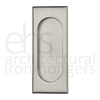 Flush Handles
Flush Handles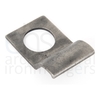 Cylinder Pulls
Cylinder Pulls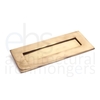 Letter Plates & Accessories
Letter Plates & Accessories Bell Pushes
Bell Pushes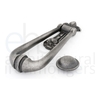 Door Knockers
Door Knockers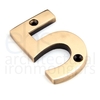 Door Numerals
Door Numerals Door Studs
Door Studs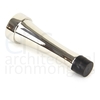 Door Stops
Door Stops Surface Door Bolts, Espagnolettes & Sockets
Surface Door Bolts, Espagnolettes & Sockets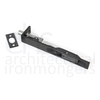 Flush Door Bolts
Flush Door Bolts Cabin Hooks
Cabin Hooks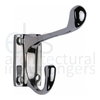 Coat Hooks
Coat Hooks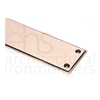 Finger & Kick Plates
Finger & Kick Plates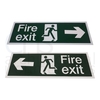 Signage
Signage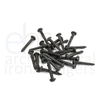 Accessories & Spares
Accessories & Spares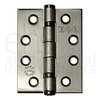 Door Hinges
Door Hinges Gate Hinges
Gate Hinges Sliding & Folding Gear
Sliding & Folding Gear Overhead Door Closers
Overhead Door Closers Transom & Bottom Rail Door Closers
Transom & Bottom Rail Door Closers Concealed Jamb Door Closers
Concealed Jamb Door Closers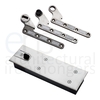 Floor Springs, Pivots & Accessories
Floor Springs, Pivots & Accessories Holders, Restrictors & Selectors
Holders, Restrictors & Selectors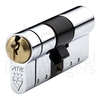 Cylinders
Cylinders Roller Catches
Roller Catches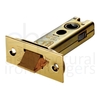 Latches
Latches Deadbolts
Deadbolts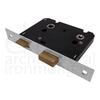 Bathroom Locks
Bathroom Locks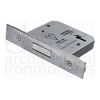 Deadlocks
Deadlocks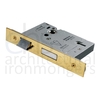 Sashlocks
Sashlocks Mortice Nightlatches
Mortice Nightlatches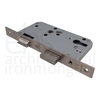 Euro Standard DIN Locks
Euro Standard DIN Locks ASSA Modular Lock Cases
ASSA Modular Lock Cases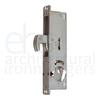 Metal Door Locks & Accessories
Metal Door Locks & Accessories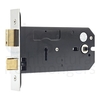 Horizontal Locks & Latches
Horizontal Locks & Latches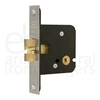 Sliding Door Locks
Sliding Door Locks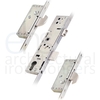 Multi-Point Locks
Multi-Point Locks Rim Nightlatches
Rim Nightlatches Rim Locks
Rim Locks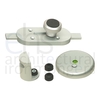 Cubicle Slide & Turn Bolts
Cubicle Slide & Turn Bolts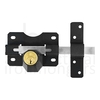 Gate, Garage & Shutter Locks
Gate, Garage & Shutter Locks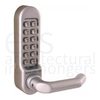 Access Control
Access Control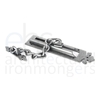 Secondary Door Security
Secondary Door Security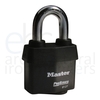 Padlocks, Padbolts, Hasps & Chain
Padlocks, Padbolts, Hasps & Chain Panic Hardware
Panic Hardware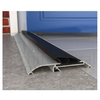 Threshold Seals
Threshold Seals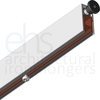 Acoustic & Drop Down Seals
Acoustic & Drop Down Seals Perimeter Seals
Perimeter Seals Joinery Seals
Joinery Seals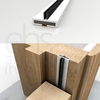 Intumescent Seals & Fire Products
Intumescent Seals & Fire Products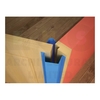 Finger Guards
Finger Guards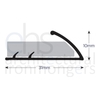 Floor & Carpet Trims
Floor & Carpet Trims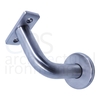 Grab Rails, Handrails & Brackets
Grab Rails, Handrails & Brackets Ventilators
Ventilators Cabinet Knobs
Cabinet Knobs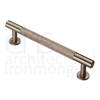 Cabinet Pull Handles
Cabinet Pull Handles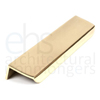 Cabinet Edge Pull Handles
Cabinet Edge Pull Handles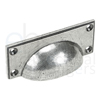 Cabinet Cup Handles
Cabinet Cup Handles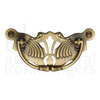 Cabinet Drop Handles
Cabinet Drop Handles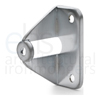 Cabinet Handle Accessories
Cabinet Handle Accessories Cabinet Hinges
Cabinet Hinges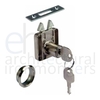 Cabinet Locks
Cabinet Locks Cabinet & Magnetic Catches
Cabinet & Magnetic Catches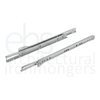 Drawer Runners
Drawer Runners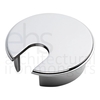 Cabinet Accessories
Cabinet Accessories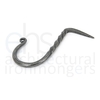 Cabinet & Cup Hooks
Cabinet & Cup Hooks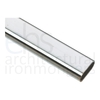 Wardrobe Rails & Fittings
Wardrobe Rails & Fittings Shelving
Shelving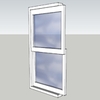 Sash & Case Fittings
Sash & Case Fittings Casement Window Fittings
Casement Window Fittings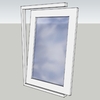 Espagnolette & Tilt Turn Fittings
Espagnolette & Tilt Turn Fittings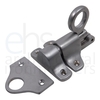 Fanlight Fittings
Fanlight Fittings Window Restrictors
Window Restrictors Universal Window Security
Universal Window Security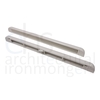 Slot & Trim Vents
Slot & Trim Vents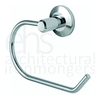 Bathroom Accessories
Bathroom Accessories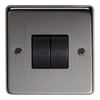 Switches & Sockets
Switches & Sockets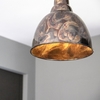 Lighting
Lighting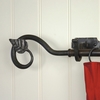 Curtain Fittings
Curtain Fittings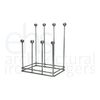 Boot Racks
Boot Racks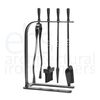 Fireplace Fittings
Fireplace Fittings Architectural Metal Sinks
Architectural Metal Sinks Architectural Metal Plant Pots & Vases
Architectural Metal Plant Pots & Vases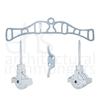 Traditional Laundry Pulley Fittings
Traditional Laundry Pulley Fittings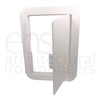 Plastic Access Panels
Plastic Access Panels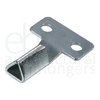 Meter Box & Radiator Keys
Meter Box & Radiator Keys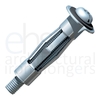 Screws & Fixings
Screws & Fixings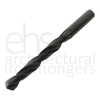 Drills For Metal
Drills For Metal Drills For Wood
Drills For Wood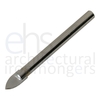 Drills For Glass & Tiles
Drills For Glass & Tiles Drills For Brick & Block
Drills For Brick & Block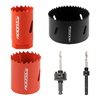 Hole Saws & Arbours
Hole Saws & Arbours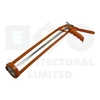 Caulking Guns
Caulking Guns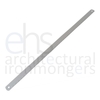 Knives, Scrapers & Blades
Knives, Scrapers & Blades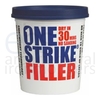 Fillers & Caulks
Fillers & Caulks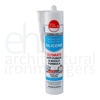 Sealants & Silicones
Sealants & Silicones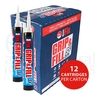 Adhesives
Adhesives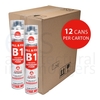 Foam & Accessories
Foam & Accessories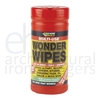 Wipes & Cleaning Materials
Wipes & Cleaning Materials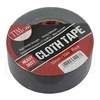 Tapes
Tapes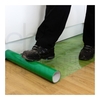 Surface Protection
Surface Protection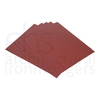 Abrasives
Abrasives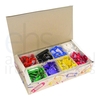 Plastic Key Tallies With Write On Labels
Plastic Key Tallies With Write On Labels

